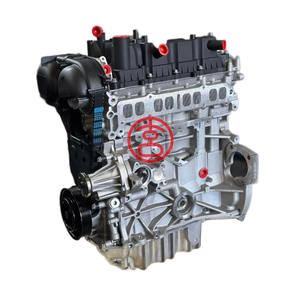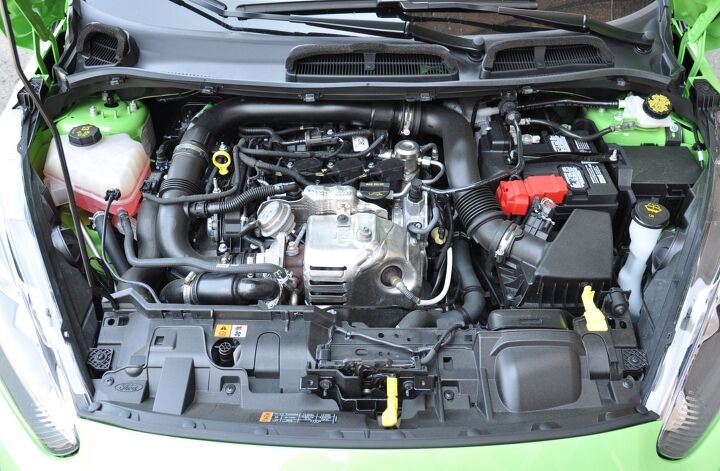The Role of a Quality Ford Fiesta Engine in Vehicle Performance
The Role of a Quality Ford Fiesta Engine in Vehicle Performance
Blog Article
Unlocking the Power of Engines: A Comprehensive Guide to Efficiency and Efficiency
Understanding the intricate auto mechanics of engines is crucial for both efficiency enthusiasts and everyday chauffeurs. By taking a look at vital metrics such as horse power and torque, one can value just how adjusting strategies improve performance while addressing environmental worries. Regular maintenance plays an essential duty in sustaining optimal performance over time. As the auto landscape changes towards electrification and advanced innovations, the question emerges: exactly how can we properly adjust to these changes while making the most of engine capacities? The answers might redefine our strategy to engine performance and effectiveness in manner ins which are both informing and necessary.
Comprehending Engine Essentials
What constitutes the essential mechanics of an engine? At its core, an engine is an equipment created to convert gas right into power with a series of regulated surges or burning processes. The main elements include the cylinder, piston, crankshaft, camshaft, and shutoffs. The cylinder functions as the chamber where burning occurs, while the piston moves within the cylinder to transform the power from combustion into direct movement (ford fiesta engine).
The crankshaft after that transforms this straight motion into rotational power, which ultimately powers the car. The camshaft regulates the opening and closing of the shutoffs, managing the consumption of air and fuel and the expulsion of exhaust gases. Furthermore, the engine relies on a thoroughly adjusted fuel-air combination, ignition system, and cooling system to guarantee optimum performance and performance.
Comprehending engine fundamentals likewise involves acknowledging the significance of engine cycles, such as the four-stroke cycle, that includes intake, power, compression, and exhaust strokes. Each phase is crucial in making certain the engine operates efficiently and efficiently. Mastery of these fundamental auto mechanics lays the groundwork for discovering a lot more complex engine dynamics and performance metrics, crucial for maximizing both power output and effectiveness.
Key Performance Metrics
Trick performance metrics are vital for assessing an engine's effectiveness and power outcome, providing valuable understandings for both consumers and manufacturers. These metrics function as benchmarks for engine performance, permitting for notified choices in production, style, and buying.
Among the key metrics is horse power, which measures the engine's capability to perform job over time. Torque, determined in pound-feet, is an additional important metric that shows the engine's rotational pressure, straight impacting velocity and hauling capacity. Gas performance, normally measured in miles per gallon (MPG) or litres per 100 kilometers (L/100km), examines how properly the engine transforms gas right into activity, impacting functional costs and ecological factors to consider.
Furthermore, thermal performance measures just how well an engine transforms fuel energy into beneficial work, exposing insights into energy losses mostly with warm. Exhaust degrees, consisting of carbon dioxide and NOx, are likewise vital, showing the engine's environmental effect and compliance with regulative requirements.

Tuning Techniques for Performance
Tuning techniques play a considerable role in enhancing engine performance by enhancing efficiency metrics identified in earlier discussions (ford fiesta engine). Various techniques exist to make improvements an engine, each adding to improved fuel economy and reduced emissions
One efficient technique is readjusting the air-fuel ratio, guaranteeing the engine operates within the ideal combustion routine. A leaner combination can enhance fuel effectiveness, yet it must be stabilized to avoid misfires or engine knock. Furthermore, reprogramming the engine monitoring system can recalibrate specifications such as ignition timing, which better improves performance while keeping power outcome.
One more crucial method involves changing the intake and exhaust systems. Updating to high-performance air filters and exhaust headers can decrease back stress, promoting better air flow. This allows the engine to take a breath even more easily, causing enhanced burning effectiveness.
In addition, the application of advanced adjusting devices, like dyno testing, supplies exact data that makes it possible for targeted changes. Frequently checking these performance metrics makes certain that tuning initiatives produce the preferred performance results. Jointly, these methods not only boost engine efficiency however additionally add to lasting sustainability in engine operations.
Upkeep for Optimal Efficiency
Regular engine maintenance is important for achieving optimum efficiency and long life. A well-maintained engine not only operates efficiently yet likewise minimizes the danger of costly repairs and malfunctions. Key parts calling for routine interest consist of oil, filters, belts, and ignition system.
Changing the engine oil at advised periods is critical, as oil lubes moving components and avoids getting too hot. Similarly, changing oil and air filters makes certain that contaminants do not impair engine function. Overlooking these parts can lead to reduced effectiveness and possible engine damages.
In addition, evaluating and replacing worn belts and hose pipes is vital to prevent abrupt failures. Timing belts, particularly, must be replaced according to the producer's additional resources routine to prevent tragic engine damage.
Ignition system need to likewise be checked and changed as necessary, given that they play a critical function in ignition and fuel efficiency.
Future Trends in Engine Technology
Embracing advancements in modern technology, the future of engine design is poised to reinvent performance and effectiveness throughout different applications. Hybrid and fully electric powertrains are becoming progressively conventional, using minimized discharges and boosted gas efficiency.
Furthermore, innovations in products science are resulting in lighter, stronger components that improve engine efficiency while lowering energy usage. Advanced production techniques, such as 3D printing, allow for the production of complicated geometries that improve air read this post here movement and thermal administration, hence optimizing combustion procedures.
In addition, the integration of man-made intelligence and artificial intelligence is readied to transform engine diagnostics and performance adjusting. These technologies can assess vast quantities of data in actual time, making it possible for anticipating maintenance and tailored efficiency improvements.
Verdict
To conclude, unlocking the power of engines requires a detailed understanding of their auto mechanics and efficiency metrics. Executing effective adjusting methods and sticking to normal upkeep methods substantially boost engine capacities. As the automobile landscape evolves, welcoming future patterns in technology, including electrification and advanced production, will be vital for enhancing performance and efficiency. This thorough approach not just advantages fanatics yet additionally adds to lasting services in the world of automobile engineering.
Additionally, the engine relies on a carefully calibrated fuel-air mixture, ignition system, and cooling system to make sure optimum efficiency and efficiency.
Comprehending engine essentials also entails recognizing the value of engine cycles, such as the four-stroke cycle, which includes intake, exhaust, power, and compression strokes. Mastery of these essential mechanics lays the foundation for exploring more complicated engine dynamics and efficiency metrics, important for optimizing both power useful reference output and efficiency.

Embracing developments in modern technology, the future of engine layout is poised to transform performance and efficiency across numerous applications.
Report this page